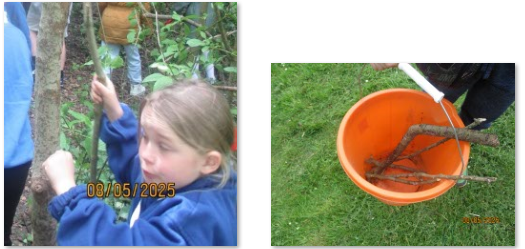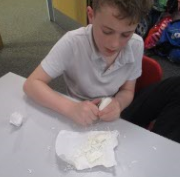Term 5
Courtesy Created Fire!
Courtesy have used the forest school area to create fires. In our Stone Age topic, we have learnt how fire would’ve been essential for life in the Stone Age. We worked with Mr Trenowden to gather a range of different sized sticks that we then used to create our fire.


Cave Painting
Courtesy been learning about life in Stone Age. As part of this, we have explored what cave paintings are. We looked at how cave men drew pictures of animals and people. This showed us what life was like in the Stone Age. We then went outside and made our own paint using mud and charcoal. We also created our own paint brushes to make our own cave paintings!




Creating Stone-Age tools
Courtesy have been exploring Stone Age tools. We explored how Stone Age people would’ve used stone and flint to carve their tools using a skill called knapping. We then used bars of soaps to create our own tools.


‘I found it easy but I think it would’ve been hard with stone!’
‘I found it hard because it was difficult to carve with different tools!’
‘I found it hard because it took a long time to carve!’


Hunter Gatherers
Courtesy class explored what it would be like to become a hunter-gatherer. We worked in families to hunt and gather ‘food’ we could find on the school field! We discovered that this was trickier than we thought, as some families found lots of ‘food’ and others found none!


‘I found lots of ‘food’ on the field. That would mean I had lots of food in the Stone Age’
‘My family found lots of food on the field!’
‘We didn’t find much food on the field! We would’ve been hungry in the Stone Age!’
Once we came back into class, we then tasted some different Stone Age food such as berries, honey and mushrooms. We were open-minded when tasting the food!
‘My favourite food was the mushrooms! I didn’t like the blackberries’
‘I didn’t like any of the food!’
‘I didn’t like the blueberries’


